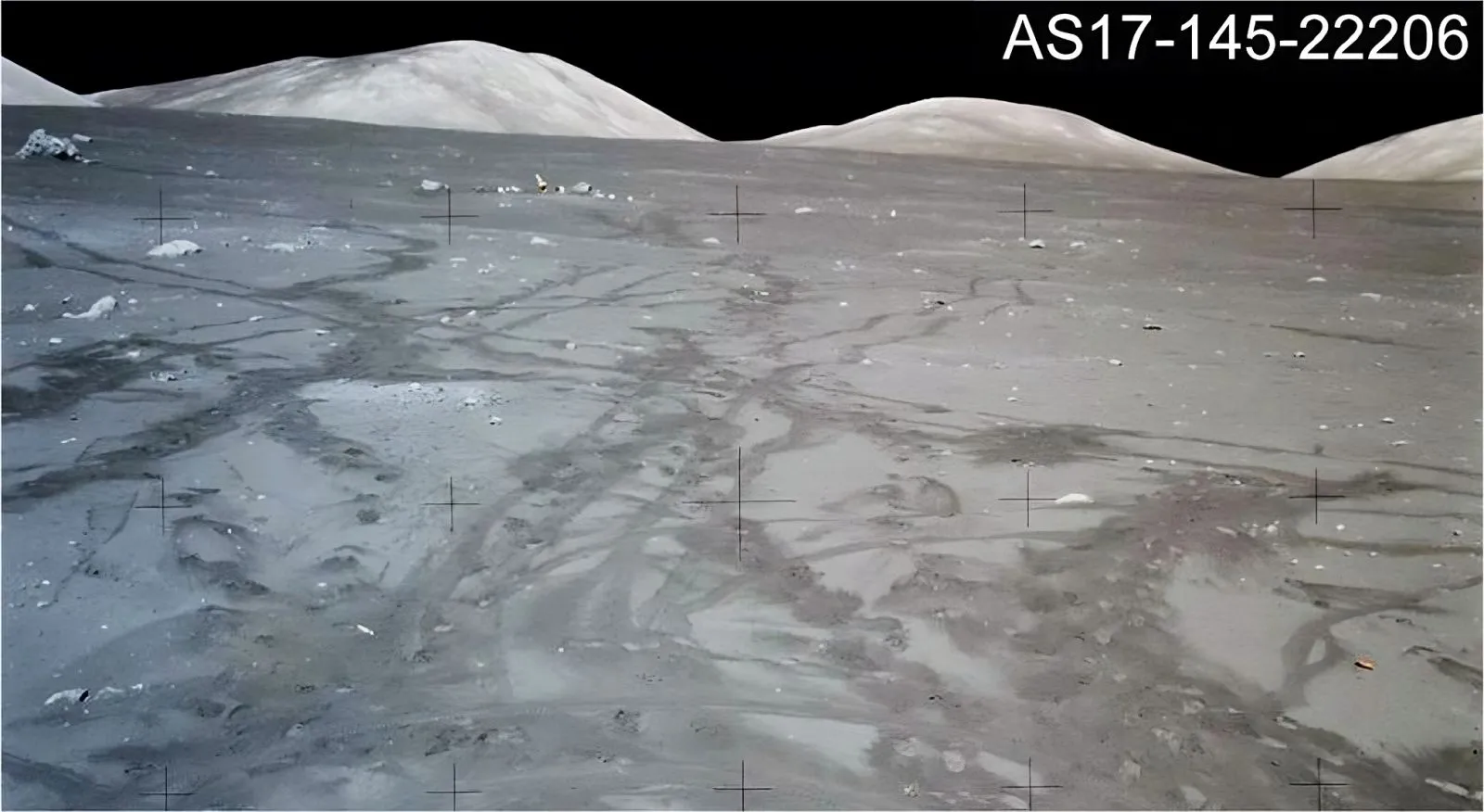Water is present everywhere on the Moon, not just at the poles
Published by Cédric,
Article author: Cédric DEPOND
Source: The Planetary Science Journal
Other Languages: FR, DE, ES, PT
Article author: Cédric DEPOND
Source: The Planetary Science Journal
Other Languages: FR, DE, ES, PT
Follow us on Google News (click on ☆)
The Indian probe Chandrayaan-1 revealed water and hydroxyl molecules in unexpected areas. These new observations are reshaping our perception of the Moon.

Image of the lunar surface, taken by NASA's Apollo 17 mission. You can see the rover's tracks and the astronauts' footprints showing that the disturbed soil is darker and of a different color than the surface, indicating changes in grain size and/or composition with depth. The contrast has been increased from the original to better highlight the tracks.
Scientists used an infrared spectrometer onboard to map the water present on our natural satellite. This instrument captures light signatures invisible to the human eye, allowing for the detection of water. The results show a much broader distribution of water molecules than previously expected. Even areas exposed to sunlight, theoretically barren, contain traces of water and hydroxyl.
The origin of this water is thought to be linked to meteorite impacts which, upon striking the Moon's surface, created craters and exposed hidden rocks rich in water. As these meteorites hit the lunar soil, they reveal materials containing water in the form of ice or mineral traces. In addition to water, these materials also contain hydroxyl, a molecule similar to water but slightly different, created by the action of solar winds.
The process of water formation on the Moon is particularly complex and involves several mechanisms. During meteoritic impacts or volcanic eruptions, the water contained within lunar rocks is released as vapor or ice. However, once on the surface, this water is rapidly altered by cosmic rays and solar winds. This process leaves behind traces in the form of hydroxyl layers, a more stable surface molecule. Over time, these continual interactions change the chemical composition of lunar rocks.
These discoveries have significant implications for space exploration. Future astronauts could utilize these water resources to survive, even far from the lunar poles. Understanding water distribution is crucial for determining where the first lunar bases could be established. This knowledge will pave the way for extended missions on the Moon.